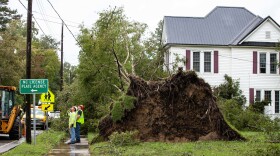For the first time ever, all 170 races for the North Carolina General Assembly will have candidates from both major parties.A flurry of candidate filings took place before the noon deadline on Wednesday. The increase of candidates is noteworthy as just two years ago, 15 of the 50 Senate races and 58 of the 120 House districts lacked a Democrat or a Republican in the General Election.
However, while there are many more competitors, it remains to be seen just how competitive some of the deeply red and securely blue districts can be. Strategists expect the most competitive races to play out in suburban Wake, Mecklenburg and Guilford Counties.
Republicans hold veto-proof majorities in both chambers of the Legislature. Democrats are trying to gain four seats in the House, or six seats in the Senate, to end that control. That would in effect give the Governor a more relevant seat at the negotiation table.
Looking ahead to 2018 here a couple things to note:
- There are no presidential, Council of State, or U.S. Senate races in North Carolina this year. The last time that happened was 2006 – when 36.5 percent of registered voters cast ballots; only 12 percent turned out for that primary.
- While there are no statewide political races on the ballot this fall, voters will weigh in on a state Supreme Court contest. That judicial match-up pits Barbara Jackson, a Republican incumbent, against Anita Earls, a Democrat, who has been the lead attorney for plaintiffs in several redistricting lawsuits.





